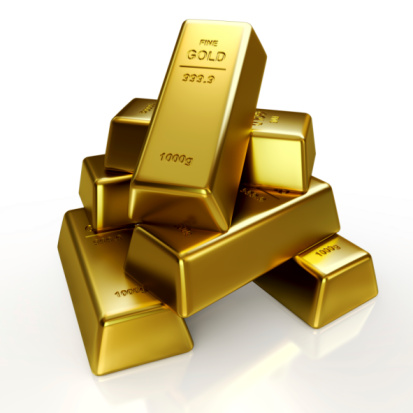Commodities & Metals
World Gold Council: Gold Not in Jeopardy at All with Higher Interest Rates Alone
Published:
Last Updated:
Easy money and near-zero interest rates from the Federal Reserve created a great environment for gold bugs to drive the price of gold higher and higher. Central banks around the world also were printing new money, creating a perfect storm for gold. But now we have seen a 1% rise in long-term interest rates and the quantitative easing is expected to end sooner than expected. These new factors crushed the price of gold. The World Gold Council is obviously pro-gold, but it has issued a report that provides a reality check between rising interest rates and the effect on the price of gold.
A new investment outlook for gold from the World Gold Council may act to ease some of the fears that drove gold down from $1,800 per ounce in 2012 to about $1,200 in 2013. Gold has acted as though it is trying to find a bottom, but investors are understandingly afraid about interest rates.
Gold is supposed to be less attractive as a store of value and cash alternative if interest rates rise from less than 1% on the short end of the curve to 3% or 4% again. What if the fears about gold are overblown?
The World Gold Council asserts that the fears of monetary policy normalization come with some misconceptions about the relationship that gold has with real interest rates. Its assessment is that higher real interest rates “are not unconditionally adverse for gold, as the effect of other factors needs to be considered.” It believes that gold’s portfolio attributes are not compromised by a return to a normal interest rate environment. A significant issue and development is that the influence that U.S. interest rates have had on gold has diminished in past few decades as gold demand has shifted from the West to the East.
As the global gold market has expanded, supply and demand dynamics have become more diverse. Gold may be an investment tool when interest rates are low, but gold remains a consumer product that can be positively influenced by economic growth. The World Gold Council shows that structural changes have taken place in the gold market, and higher demand from emerging markets will contribute to factors around the price of gold.
The World Gold Council’s investment outlook represents that a moderate real interest rate environment can be favorable to gold’s attribute. It believes that gold will still be relevant. A moderate rate environment is one with real rates between 0% and 4%, and the council expects that portfolio returns on gold can remain at the historic 6% to 7% in this environment, and with less volatility than in a near-zero rate environment.
One warning does exist here about an interest rate rise. High interest rate environments, with rates above 4%, are the least favorable to gold returns. The World Gold Council notes in its conclusion:
Results from our analysis show that contrary to the simplistic view that high US real rates should lead to lower gold prices, moving to a moderate real estate environment promotes gold’s portfolio characteristics further. Returns in such an environment are in excess of the conservative return estimate used to provide evidence of gold’s portfolio contribution credentials.
The council’s conclusion includes an out as well that leaves higher real interest rates as a wild card. It concludes:
We do not know what a high real rate environment would mean for gold, as it would be contingent on so many other factors, not least of which are those that now originate in emerging markets.
24/7 Wall St. would like to convey a what seems to be a clear message from the World Gold Council, even though it was not formally stated. When we saw the World Gold Council’s first 2013 outlook for gold, we clearly signaled that its bullishness on the price of gold was far less optimistic than it had been before. Our interpretation of this latest report is an echo of that, and then some. The World Gold Council did not make any robust gold predictions here, and any notion that gold is headed to $2,000, or even back to $1,800, any time soon is not apparent at all.
Here are the key ETFs to consider, which show in detail the dramatic price changes of gold and its key ETFs:
We have included several charts below on gold and its relation to rates and other markets. The first chart shows gold’s assumed negative correlation to real interest rates in the United States. A second chart shows that gold’s relationship is less clear when other factors are considered. A third, and final, chart shows a less obvious relationship with gold against equities and real interest rates.
FULL WORLD GOLD COUNCIL OUTLOOK
Start by taking a quick retirement quiz from SmartAsset that will match you with up to 3 financial advisors that serve your area and beyond in 5 minutes, or less.
Each advisor has been vetted by SmartAsset and is held to a fiduciary standard to act in your best interests.
Here’s how it works:
1. Answer SmartAsset advisor match quiz
2. Review your pre-screened matches at your leisure. Check out the advisors’ profiles.
3. Speak with advisors at no cost to you. Have an introductory call on the phone or introduction in person and choose whom to work with in the future
Thank you for reading! Have some feedback for us?
Contact the 24/7 Wall St. editorial team.